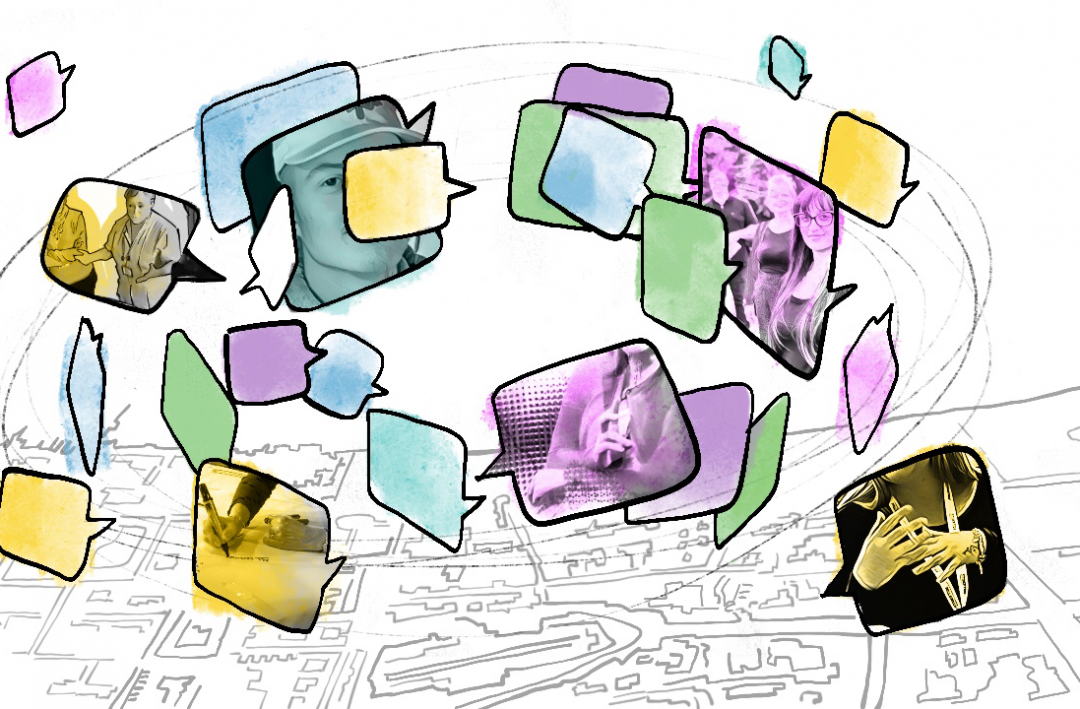It’s all about stories: Implementation, impact and embedding great practice.
Blog

Ian Robson is Implementation Lead within our Supporting Children and Families theme. He is a Senior Lecturer in the Department of Social Work, Education and Community Wellbeing at Northumbria University, and has previously worked in the voluntary sector and in local authorities. Ian’s research and teaching promotes better co-design of services using visual methods and tools for practice. In this blog, he shares his advice around how taking a ‘storytelling approach’ to implementation can help to shape, define and maximise the impact your research project can make.
What is the story of your project?
Because you are reading this, you probably have an ambition and a plan for understanding and improving people’s health. I’d like to share some thoughts about implementing your project and its impact by considering your project as a shared story.
I have a confession: I’m not sure I like the word implementation all that much. As an alternative, I have been thinking about my projects as shared stories. In my experience, stories get better when they are told well, heard, and refined. A good story speaks to a community and connects people, involves them, invites them to be part of it and gets things done. I want to suggest that we can think of implementation, and impact, as a great story.
So – let’s think of your research project as a good story which benefits from being told well. If we think of storytelling (and project implementation) as a craft, then there are things we can do to ensure we tell a ‘good’ story. Here are some principles I’ve found helpful:
A story, and project, is an opportunity to connect with others. We want people to stop and pay attention to a good story, to follow it and to be changed by it. Our projects and research activities can do that, too. In my experience, good stories and good projects start with considering your audience, or considering whose shared story it can be.
I have found that if I am excited, challenged, and motivated, then the story comes alive, and a community is more engaged. A great story changes things because people are engaged with it and want to share it. In other words, good stories, and good projects, are built around shared purpose and the story is told to have a specific impact.
Tips for planning your project story:
• Take time to do a stakeholder analysis: consider positions, goals, priorities, preferences
• Find practical ways to hear your project stakeholders, and create narratives about your project that reflect their concerns (e.g. share a blog post, host a Teams or Zoom drop in, include their voices in your communication)
• Create a reflective note about how your project is an opportunity and why you are motivated by it.
Stories, like projects, work best when they get the details right and turn on the points that grab people’s attention. For me, this informs thinking about project implementation and impact because the more I think about dimensions (and measures) of impact, the more gripping the story can be.
Talk about what matters to people, understand the points the story turns on, and make monitoring and measurement a storytelling experience. Find ways to document what matters in a way which enriches the story and consider how your documentation can thread together into something like a wonderful collage. Value both quantitative data and qualitative measures, try turning stories into measures and vice versa.
Tips for capturing the detail:
• Ask people how they will know things have got better: what will things look like?
• Curate a varied ‘scorecard’ of evidence of impact that can tell your story.
• Use tools like Miro to create shared evidence boards, or create stories and document your project through Instagram, or a postcard correspondence activity.
Once you have a meaningful story, you can really embed its impact and build in some sustainability by making it something that you can share. For example, I find that objects and artefacts do a great job of helping to spread stories, and in the last year I have worked with others to create graphic narratives, films and artefacts than can be used and exhibited.
Sometimes we have the best stories, but we unintentionally hold on to them, and others don’t get the opportunity to be excited by the things we are seeing on our studies and projects. Share the story, share the inspiration, and grow your storytelling community. I love see projects materialise and mobilise the learning from their work – it’s a double win: document impact and extend it.
Tips for storytelling:
• Create a graphic narrative to share your story and learning (e.g. booklet, exhibition boards, animated PowerPoint, home-made collage).
• Consider putting key advice from your project into a flip book, zine or laminated card for practitioners.
• Film a short YouTube video (with relevant permissions) – people like sharing them on social media!
If you would like to chat about implementation or impact, you can get in touch with Ian at [email protected]
As well as his work with Northumbria University and the NIHR ARC North East and North Cumbria, Ian is also chair of Newcastle’s 1001 Critical Days Partnership, and is especially interested in promoting partnerships with pregnant women and babies during the first 1001 days of life. As an adoptive parent of four children, Ian is passionate about inclusion and enabling children and young people who are disabled or who have experienced trauma or loss.
Connect with Ian on Twitter @ianrobsons